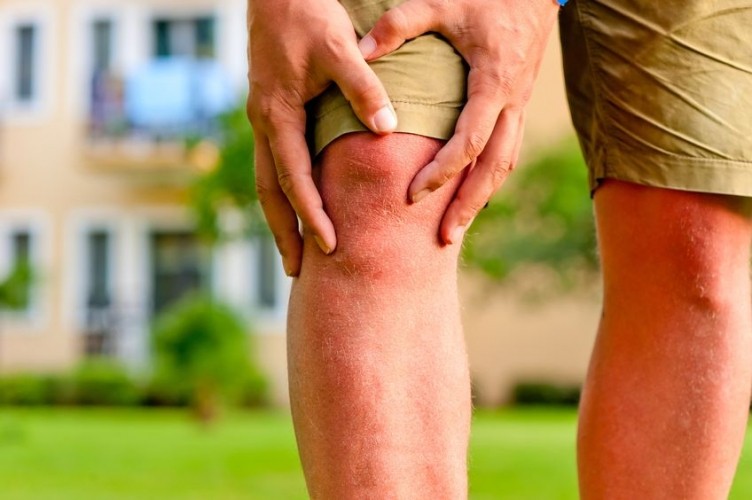
ARTICLERegenerative Medicine as a Partner for Orthopedists
Over 10 years of research and 600 cases in which regenerative medicine treatments have been used successfully have helped to give birth to RE.GA.IN. – Regenerative Galeazzi Institute, Center of Excellence of the Galeazzi IRCCS.
Osteoarthritis is the most common form of arthritis that currently affects 10% of individuals over the age of 60 throughout the world, and is estimated to become the fourth leading cause of disability by 2025. Conservative, non-invasive treatments, such as physical therapy or the use of anti-inflammatory drugs and painkillers, bring only modest and short-term improvements. Therefore, the demand for knee and hip prostheses is constantly increasing. Halfway between pharmacological and surgical treatments, mesenchymal stem cells have caused great interest in the field due to their anti-inflammatory potential and the ability to positively influence the articular environment.
Counteracting Progression, Especially in Younger Patients
Osteoarthritis is a chronic and progressive disease, therefore an early diagnosis is essential to establish an adequate therapy to help counteract the progression of the disease.
This isn’t a concern only for elderly patients: more and more young people are confronted with an early onset of osteoarthritis, sometimes a consequence of repeated traumas or sports-related injuries, or caused by the anatomical conformation of their joints.
As Dr. Francesca Facchini of the Center for Traumatology of Sports and Arthroscopic Surgery (C.T.S.) of the IRCCS Galeazzi Orthopedic Institute remembers, “treating the younger arthrosic patients successfully is a particularly arduous challenge. In fact, these patients are likely to have a more active and physically demanding lifestyle, which negatively affects the longevity of prosthetic implants, as demonstrated by the higher rate of implant failures leading to revision interventions in younger patients than those older. ”
Due to the growing number of patients suffering from arthritis, many of whom are still young and with high functional requirements, conservative treatments based on the use of mesenchymal stem cells are becoming increasingly valuable and relevant.
The Potential of Mesenchymal Stem Cells: the Small “Pharmacy” of our Body
Recent discoveries have completely changed our awareness for the potential and function of mesenchymal stem cells. Following a trauma or an inflammatory event, these cells can be activated to produce different types of anti-inflammatory molecules, thus starting the process of restoring the normal physiological state of the tissue.
It is thanks to these observations that Arnold Caplan and his colleagues at the Case University of Cleveland – USA, defined mesenchymal stem cells as a “pharmacy” for our body. These cells, if used in a pathological environment, release a cocktail of drugs produced by the cells of your own body that’s soluble in the surrounding environment.
These characteristics are particularly relevant for the treatment of a complex condition such as osteoarthritis, which is usually characterized by cartilage degeneration, inflammation of the synovial membrane (a thin membrane that internally covers the joint capsule and the articular part of the bone), and degenerative changes of the subchondral bone (bone beneath the cartilage).
In fact, mesenchymal stem cells have become a useful tool to provide patients with an effective and safe treatment that doesn’t preclude future surgical treatments.
RE.GA.IN. Regenerative Galeazzi Institute
RE.GA.IN., the Center for Regenerative Medicine of the IRCCS Galeazzi, gives patients access to advanced procedures that use cells and molecules present in the bone marrow or adipose tissue (growth factors). These have been studied for over 10 years in the Laboratory of Biology Applied to Orthopedics.
The patient, once our specialists identify the best type of treatment after their first visit, is subjected to a small withdrawal of adipose tissue (usually from the abdomen) or bone marrow (from the iliac crest). The sample, after being processed with the most modern and effective methods approved by the RE.GA.IN Scientific Clinical Committee, is then delivered to the arthritic site.
After treatment, the patient can immediately resume light daily activities and return to more demanding activities, such as sports, after a few weeks.
At RE.GA.IN., PRP (Platelet Rich Plasma) treatments are also performed, which are derived from a patient’s own blood samples. These treatments, used at the IRCCS Galeazzi Orthopedic Institute for over 10 years, have provided excellent results in the treatment of various diseases, including the earliest stages of arthritis.
The Future Challenges of RE.GA.IN.
At RE.GA.IN., the goal is not to simply be highly specialized center operating according to the most rigorous safety standards, but also a data collection center to which RE.GA.IN. researchers can analyze results and continuously improve the effectiveness and safety of our treatments.
“RE.GA.IN. is a Center for Regenerative Medicine where, to provide patients with a better experience, basic scientists, doctors and bio-tech industries work in close collaboration” explains Dr. Laura de Girolamo, Director of RE.GA.IN. and of the Laboratory of Applied Biology of the IRCCS Galeazzi. Patients treated at RE.GA.IN. – thanks to a software that innovates the concept of care and facilitates the doctor-patient relationship – receive detailed information about the treatment they undergo, are guided during the therapeutic course, and then monitored for some time after the procedure to study the results.